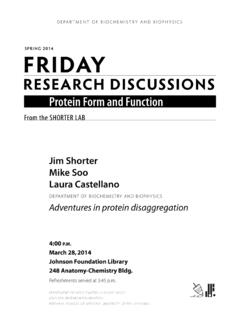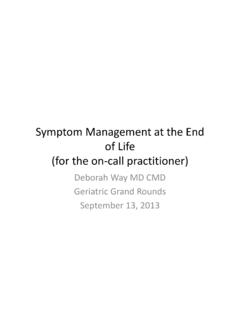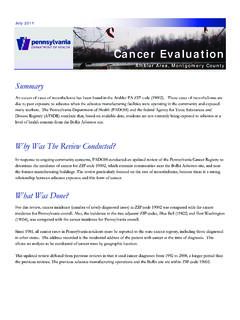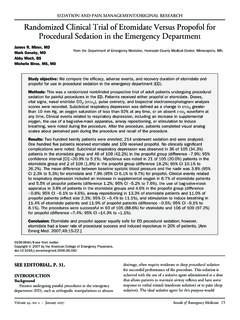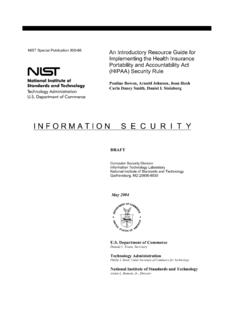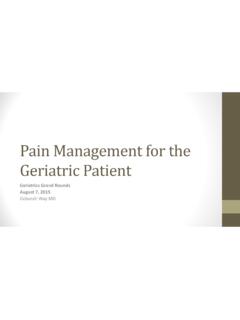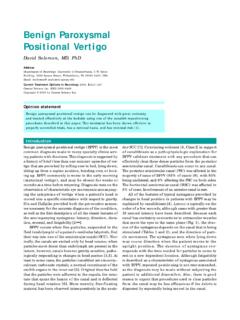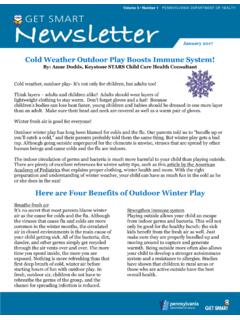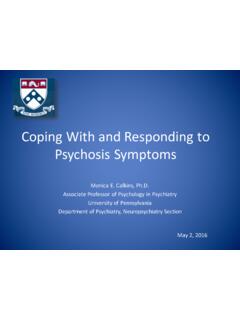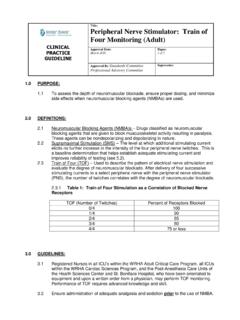Transcription of UPHS Post Cardiac Arrest Targeted Temperature Management ...
1 1 UPHS Post Cardiac Arrest Targeted Temperature Management (TTM) Clinical Practice Guideline Purpose: A guideline to direct evidence-based care to post Cardiac Arrest patients who remain comatose after return of spontaneous circulation. This guideline should be used in conjunction with the Targeted Temperature Management (TTM) orderset in Penn Chart. Position Statements All post Cardiac Arrest comatose patients, regardless of their initial rhythm (shockable vs non-shockable) and location of Arrest (out-of-hospital or in-hospital Cardiac Arrest OHCA/IHCA) should be evaluated for active TTM. Active cooling should be considered and begin as soon as possible, and for up to 12 hours after ROSC. All patients should be first considered for a 33 C (range 32 -34 C) goal Temperature unless contraindicated. Patients should continue to receive aggressive post- Cardiac Arrest care, including 48 hours of post-rewarming normothermia and avoidance of neuro-prognostication for at least 72 hours after rewarming to 37 C.
2 OHCAs are often secondary to acute coronary syndrome and early coronary revascularization may improve survival. Prior to initiation of TTM and based on presenting Cardiac rhythm, clinical teams are strongly encouraged to first consider the benefit of Cardiac catheterization. Interventional cardiology should be consulted at the earliest appropriate time. If Cardiac catheterization is indicated, TTM should not be delayed, and can be maintained during interventional cardiology procedures. Research Summary Two early multicenter randomized controlled trials assessed patients with shockable rhythms after Cardiac Arrest and reported promising results in terms of survival and neurological outcomes at Targeted temperatures between 32 C and 34 C. (1,2). However, more recent evidence from a large multicenter RCT ( , the Therapeutic Temperature Management Trial) suggested no difference in survival and neurological outcomes when TTM at 33 C was compared with TTM of 36 C.
3 Authors of this study listed several limitations that could have introduced bias. (3,4) In 2017, one center in Australia reported significant difficulty maintaining a Targeted Temperature of 36 C and a trend toward clinical worsening in patient outcomes after switching from TTM at 33 C to TTM at 36 C. (5) However, another center in Sweden reported no difference in outcomes after switching from TTM at 34 C to TTM at 36 C. (5) 2 Eligibility Criteria Table 1: TTM Inclusion and Exclusion Criteria Inclusion Criteria Remains comatose immediately following out-of-hospital or in-hospital Cardiac Arrest with return of spontaneous circulation, regardless of initial Cardiac rhythm Exclusion Criteria GCS (motor) = 6 and patient following commands Severely impaired pre- Arrest cognitive status advanced dementia Persistent non-perfusing Cardiac rhythm or ongoing refractory shock despite interventions Code status active for no resuscitation/intubation Determining Temperature Goals 1.
4 Target Temperature of 33 C (range 32 -34 C) is recommended, and should be achieved within 4 hours of obtaining return of spontaneous circulation (ROSC), and maintained for at least 24 hours from time the target Temperature is achieved. 2. Target Temperature of 36 C is recommended only if patient is at high risk for bleeding related to, but not limited to recent surgery, trauma, or other underlying medical conditions. Target Temperature of 36 C may be considered for patients with septic shock. Same conditions apply in that the Temperature should be achieved within 4 hours of obtaining ROSC, and maintained for at least 24 hours from the time the target Temperature is achieved. 3. Special Circumstances a. If patient has intracranial hemorrhage and Cardiac Arrest , the Neurology and Neurosurgery services should be consulted immediately and if available, consideration should be made for admission to the NeuroCritical Care Unit.
5 In some cases, if there are other reasons to use a colder body Temperature , such as refractory intracranial hypertension, it would be reasonable to cool to 33 C. b. If patient is pregnant, recommend consultation to OB/GYN service for guidance in determining target temperatures 4. Admission Temperature at or below target a. Patients who are at the target Temperature on admission to the hospital should be maintained using cooling measures described in this guideline. b. If below the target Temperature on admission, patient can be maintained at the closest available Targeted Temperature 33 or 36 C to avoid rewarming during acute insult. c. If no current or anticipated adverse events, rewarm gradually to the closest Targeted Temperature at a rate no faster than C per hour. 3 Initiating TTM Pain and sedative medications are begun prior to inducing hypothermia.
6 It is important to use the lowest effective dose of sedative and analgesic medications, so that subsequent neuro prognostication is not impeded. Refer to UPHS Pain, Agitation and Delirium Guidelines. See shivering section for further direction on the use of neuromuscular blocking agents (NMBA) during TTM. 1. Assess for pain initially, at least every 4 hours, and PRN using the behavioral pain scale (BPS). a. Provide IV fentanyl bolus dose of mcg, repeat q 10 minutes x 3 as needed to achieve goal BPS <6 at initiation. b. Following initial Management , provide IV fentanyl bolus dose of mcg q hour as needed to maintain BPS<6. c. If 2 or more IV boluses needed per hour to maintain BPS <6, begin continuous fentanyl infusion at mcg/hour d. Higher bolus doses of fentanyl may be needed based on patient medical/surgical history 2. Assess for agitation/sedation initially, at least every 4 hours, and PRN using the Richmond Agitation Sedation Scale (RASS).
7 A. Post- Cardiac Arrest patients meeting criteria (GCS motor <6 and patient not following commands) for TTM, patients may already have a level of consciousness consistent with a RASS of -4 to -5, and therefore not require any sedatives. Consider sedatives only if patient has an underlying level of agitation that is not responding to pain medications. b. Patients may require sedatives for indications independent of TTM such as with agitation associated with ventilator asynchrony or severe ARDS. i. Continuous infusion sedation with Propofol (following assessment and treatment of any perceived pain) is recommended as first line to achieve an ordered RASS goal appropriate to the clinical scenario. ii. Intermittent IV PRN benzodiazepine bolus is second line, or alternative therapy if Propofol is not tolerated iii. If 2 or more hourly doses of IV benzodiazepine bolus doses are required, consider initiation of a continuous infusion to achieve an ordered RASS goal.
8 Iv. Benzodiazepines are not considered first-line because of delayed drug clearance and potential impact on neuroprognostication. c. Continuous infusions of both opioids and sedatives are needed if NMBAs are initiated for shivering Management . See section on shivering prevention and treatment. Hypothermia Induction Interventions 1. Use a continuous Temperature monitoring device. a. A Temperature monitoring urinary catheter can be used for both continuous urine output and Temperature monitoring. If using a Bard Product, urine output is not necessary to obtain an accurate Temperature via this catheter. b. Esophageal Temperature probes can be used, but need to ensure appropriate positioning for accuracy. Refer to hospital guidelines for insertion of esophageal probes. 2. Initiate active internal or external cooling using a cooling device per hospital guidelines.
9 3. Target Temperature should be achieved within 4 hours of initiation of TTM. 4. Depending on the starting Temperature , consider infusing 4 C normal saline solution during the initiation of TTM. Use normal saline for first two liters, then change to lactated ringers unless hyperkalemia or severe hepatic insufficiency exists. 4 a. Patients with clinical conditions such as ARDS, significant pulmonary edema, or hemodialysis may tolerate or require less fluid. 5. If target Temperature is not achieved within 4 hours a. Add ice packs to groin and axillae b. Consider additional 250- 500 ml bolus of 4 C intravenous fluid 6. If target overshoot and temp < 32 C, the cooling device will actively warm patient in automatic mode, or consider infusing 250 ml bolus of warm 40 C intravenous normal saline or lactated ringers until Temperature > 32 C.
10 Hypothermia, electrolytes, and glucose Management 1. Electrolyte repletion during both cooling and rewarming phases a. Hypothermia-induced diuresis is expected and should be treated aggressively with fluid and electrolyte repletion. Magnesium, phosphorus, and potassium should be monitored closely and maintained in the normal range due to extracellular shifts resulting in increased serum levels during rewarming. See Table 2 b. If the patient has renal failure and requires CRRT, do not use the electrolyte recommendations in Table 2, rather use the CRRT electrolyte repletion order set for calcium, magnesium, and phosphate. c. If the patient has renal failure and not receiving CRRT, consult with provider for individualized patient orders Table 2: Electrolyte Repletion for patients with normal renal function Potassium chloride 40 mEq IV every 6 hours prn serum potassium level mmol/L 60 mEq IV every 6 hours prn serum potassium level mmol/L 80 mEq IV every 6 hours prn serum potassium level mmol/L Magnesium sulfate 1 gm IV every 6 hours prn serum magnesium level 2 mg/dL If maintaining a Mg level of 3-4 mg/dl for shivering prevention See Shivering Pathway in Table 4.

